Prius Offers AWD, Performance and 69 mpg

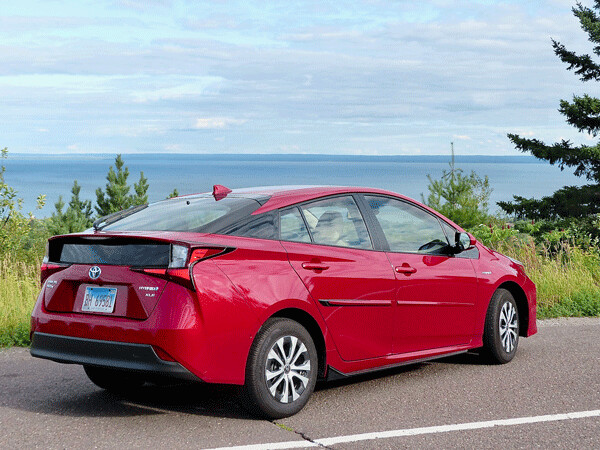
When Toyota and Honda led the way of the automotive world into the era of hybrid engineering, to combine electric motors and gasoline engines, I was impressed from the start. Many auto critics and journalists resisted it, and I realized I was risking my status as a card-carrying purist, but I also immediately sensed hybrids were the stepping stone to what is surely an era of electric cars.
The Toyota Prius was the vanguard of hybrid and of Toyota’s “Hybrid Synergy Drive,” and the subcompact has continued to thrive and excel as it has become the new icon for Toyota’s worldwide success, even replacing the Camry and Corolla as the company’s signature vehicle.
Consistency is Toyota’s hallmark, and it is the reason for the everlasting success of the midsize Camry and compact Corolla, but the Prius has countered that in many ways, taking some chances and staying at the top of the technological game played at the highest level of automotives.
Prius now has expanded to a diversified portfolio with different models and styles, and the standard front-wheel-drive models continue to show increasing fuel economy. Their consistency may have left some cynics behind, and competitive hybrid models from Honda, Hyundai and German competitors deserve and get close scrutiny, but there are reasons to take a new look at the Prius.
I have just had the opportunity to test a 2019 Prius Limited, the top of the line hatchback 4-door sedan with all-wheel drive. Interesting. The electric-motor-powered front-drive Priuses have perfected the ability to turn gas-engine power and regenerative braking into keeping the battery-pack electric motors going, but all-wheel drive seems a stretch.
Turns out, the 1.8-liter 4-cylinder engine is not tuned for highest power but to be efficiently coordinated with the electric motors, so its listed 121 horsepower doesn’t mean much. The test vehicle had performance-vehicle takeoff and swift highway operation.
The car was Supersonic Red, one of two new colors exclusive to Prius, and it practically glowed with brightness. It also has the wedge, fast-sloping arrow shape in silhouette, rising from a low nose and fitting well into the various contours that end up at the well-sculptured rear. The hatch has a huge window, which extends below the rear deck spoiler wing, which aids rear visibility greatly.
Front visibility for the driver is enhanced by the now-familiar positioning of the instruments and information screens on a centrally located region of the dashboard. That means without the speedometer binnacle, the driver looks straight down at the road ahead, with a head-up display.
The transmission is the much-loathed CVT, the continuously variable transmission that tends to drone without the shift-points we mostly know and love. Some companies program in hesitations to make a CVT feel like a normal geared transmission. But in the test car, I never even thought of it being a CVT, maybe because of the drive modes, which were fun to play with.
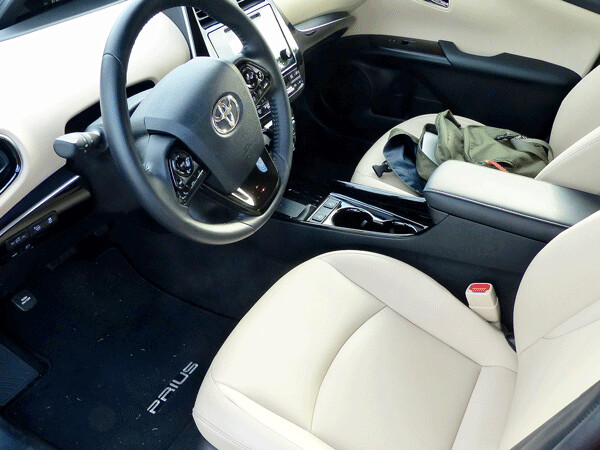

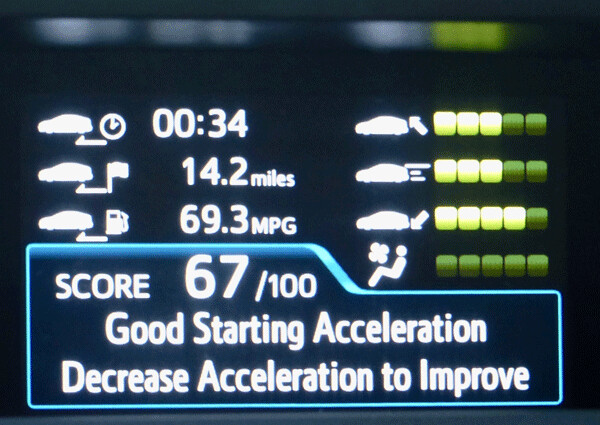
The shift lever is short, located on the center stack, and you pull it to the left and up for reverse, down for drive. Park is on a separate button on the dash, just to the left of the shift lever. You get used to it right away, sooner, for example, than you learn the importance of making sure to hit the push-button to turn off the drivetrain. Remember, the Prius charges itself up and then will shut down the gas engine to allow electric-only driving, which also means silent running.
Toyota has programmed in a notification system to alert pedestrians and other drivers or bike-riders that there is a car there, for safety reasons.
The mode button clicks you from normal to eco, or to power. In power mode, the Prius takes off with aggressive force, more than I anticipated from years of driving various Prius models. It was quick enough that I didn’t think about the CVT, focusing instead on handling around the next curve.
Those of us driving in cold-weather territory appreciate all-wheel drive because it assures us of better traction in snow or ice conditions. But as I’ve always suggested, there are only a few days, or nights, or storms, where it is truly critical, and a well-balanced front-wheel-drive vehicle with the right winter tires can get you through snowstorms with ease.
But when we do need AWD, we need it for starting up from a stop, or when you might be accelerating at moderate speed and hit a patch of ice. Toyota has a brilliant system: With no center differential or front-rear torque-shifting driveshaft, the Prius front and rear are connected by an electric oversight to coordinate the front engine and constant front-wheel drive to the rear electric motor, which drives the rear wheels. It only works, though, from 0-6 mph — right when you need it to start up smoothly, and then also kicks in for rear-wheel contributions whenever commanded by the computer, up to 43 mph. Again, it works as a safeguard when you might need it for traction. Otherwise, you’re in front-wheel drive and AWD is not engaged.
Another interesting feature of the Prius Limited, which is atop a list that goes down to XLE, LE, and to base Eco, is that the Limited battery pack is Nickel-Metal-Hydride, because, Toyota says, that old standard battery has been improved to be most resilient against severe cold drainage. Toyota used to make only Nickel-Metal-Hydride systems while competitors branched off to Lithium-Ion, which seemed to have more power, charge more quickly, and retain power better. Toyota switched to Lithium-Ion for its plug-in Prius Hybrid, and now uses Lithium-Ion battery packs for all its other Prius systems, but retains Nickel-Metal-Hydride for the Limited with AWD.
The new body design is based on Toyota’s new structural architecture, with a high-strength body made lighter by aluminum hood and specific trim items, and its high-strength body and multi-link rear suspension give the Prius Limited a definite sporty feel.
As battery packs evolve for more power and smaller size, the Prius has gained storage capacity, and now has 62.7 cubic feet under the rear hatch, if you lower the rear seats. Bright and crisply focused headlights and foglights, and taillights, are LED, and the tiny foglight are surprisingly effective.
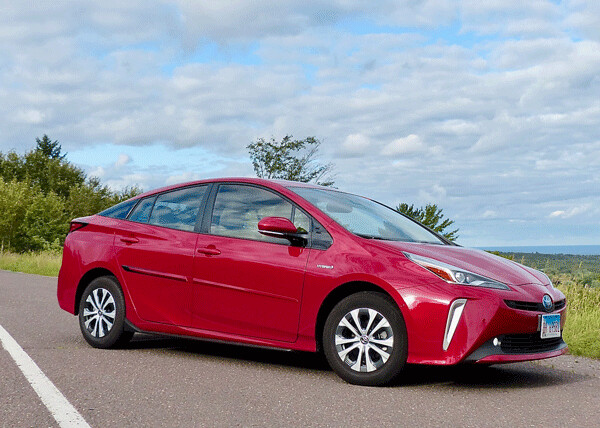
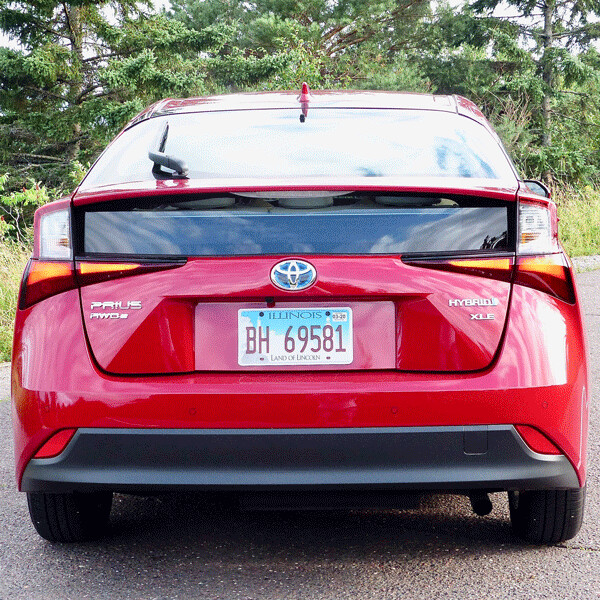
Toyota also has added in its top connectivity features and safety items, including Toyota Safety Sense, which has radar and a monocular camera to detect cars, pedestrians, lane markers and oncoming headlights. It includes pre-collision and lane-marking warning, and lane departure assist, brake assist, automatic high-beams, and climate control, plus raar cruise control.
The sticker price for the Prius Limited is $28,810, and the as-tested sticker for the test car was $32,508, with options such as the advanced technology package. That sticker also includes the information that the EPA estimate for fuel economy is 52 miles per gallon city, 48 highway, and a combined figure of 50 miles per gallon. In our driving, we were over 50 in all cases. My wife, Joan, got 56 mpg on one trip, and was actually a tad disappointed when I came home from going up and down the hills of Duluth, rural and city roads and streets, and shut it off after adding just over 14 miles to our tally, and it showed 69.3 mpg.
As if to reinforce that, it showed that since our last fill of gasoline, we were averaging 56.5 mpg.
Toyota has projected that when everything is tallied, fully 25 percent of all Prius sales might be for the all-wheel-drive models. When you tick off the assets, such as the potential for high mileage, swift power, appealing — if polarizing — appearance, drive-mode alteration that can make you overlook the CVT, why should we be surprised? And if you still want more, you can go upscale to the plug-in hybrid. Electric cars may be closer to reality, but hybrids like the Prius Limited are excellent transition vehicles.
